Pat Bertram's Blog, page 75
December 20, 2020
Too Many Days
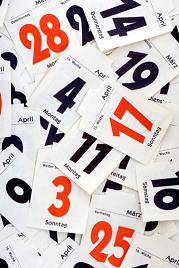
The past couple of years, I couldn’t find a calendar, not even one for sale in the stores I frequented, so I downloaded a calendar template and printed out my own calendar. It was a nice simple calendar with large enough blocks for writing notes. Since it was just plain paper, not glossy, I was able to use a pencil, which I prefer because of its erasability. (My spell check does not like that work and keeps changing it to eras ability, whatever that means.)
I went ahead and printed out a calendar this year, and then I got a couple of calendars in the mail. And then another. And yet another. I’ve lost track of how many calendars I have, but I feel the weight of all those days.
With a single calendar, each year has but 365 days. With a surfeit of calendars, it feels as all those days (365 per calendar) are stacked one on top the other. That’s way too many days for me to deal with!
I’m being a bit facetious here. I know that no matter how many calendars I have for 2021, there will still be only 365 days for the year, but I feel all those calendars reaching out to me, wanting to be filled.
But truly, one day per day is more than enough! Though that thought does lead to a story idea — some poor benighted character burdened with more than one day every day.
Luckily, I am not a character (except in my novel Madame ZeeZee’s Nightmare — I was a character in that book), and once I get rid of all those extra calendars, I’ll do fine living but one day each twenty-four-hour period.
***

Pat Bertram is the author of Grief: The Inside Story – A Guide to Surviving the Loss of a Loved One. “Grief: The Inside Story is perfect and that is not hyperbole! It is exactly what folk who are grieving need to read.” –Leesa Healy, RN, GDAS GDAT, Emotional/Mental Health Therapist & Educator
December 19, 2020
Small Town Fun
 I continue to marvel at my good fortune and the wonders of my new life — not just a house to cherish, but friends to bring me joy. And to do things with. Last year, a bunch of us got together to make wreaths. A month ago, we got together to make cards.
I continue to marvel at my good fortune and the wonders of my new life — not just a house to cherish, but friends to bring me joy. And to do things with. Last year, a bunch of us got together to make wreaths. A month ago, we got together to make cards.
And today a friend made me Thai curry for lunch, and then afterward, we made cookies. She’d never made cookies before, and this year wanted to make cookies for Santa, and my help was enlisted. It was a fun project, and what it lacked in professionalism made up for in color and enthusiasm. I’ve never been able to use those ready-made icing packages for decorating cookies — the bags are unwieldy, the icing too runny — but we did what we could with items we had.
It seems odd that when I decided to move here, making friends never entered my mind. I just figured I’d settle into my hermitage and do what I’ve done all my life — read, walk, write, and other simple pleasures of a solitary life.
But here I am, settled in as if I’d always lived here. In fact, I’ve heard myself say such small-town utterances as, “He’s the husband of the sister of the ex-wife of the nephew of so-and-so.” Yep. Going native.
The most peculiar thing about living here is the postal service — whether coming here or leaving from here, packages seem to end up in a black hole in Denver. After more than a week in Denver, a package I mailed to Las Vegas ended up in the Tucson system, and there it’s lingered for another few days. It might get to Las Vegas in time for Christmas. It might not.
But other than the primitive mail system that cuts off an entire area of a state for days on end, this town has been good to me.
There’s always something to marvel at, to be grateful for, to enjoy.
I find that utterly amazing. And so very welcome.
***

Pat Bertram is the author of Grief: The Inside Story – A Guide to Surviving the Loss of a Loved One. “Grief: The Inside Story is perfect and that is not hyperbole! It is exactly what folk who are grieving need to read.” –Leesa Healy, RN, GDAS GDAT, Emotional/Mental Health Therapist & Educator
December 18, 2020
Feeding My Adventurous Spirit
I always walk home from work, even now when it’s dark and the roads are slick from snow. To my surprise, it doesn’t worry me. In fact, I enjoy the small adventure of making my way home in the wilds of this town.
The “wilds” part is just me being facetious. The trek is but two city blocks with street lights. Still, I am alone out there, which adds to the enjoyment. I stop, look up at the sky, look around, listen, feel the chill air, take deep breaths. Sometimes I imagine myself in the wilderness as if I had taken that winter backpacking trip I had once (briefly) considered taking. Mostly I just enjoy the moment.
Not so oddly, this adventure of mine does worry other people.
It’s nice to have people concerned about me, but it’s also a bit amusing. As I’ve been explaining to various folks who think I’m doing something inordinately dangerous by making this brief trek, I have often gone adventuring on my own.
I hiked in the mountains alone. I hiked along beaches alone. I hiked in forests alone. I camped alone. I backpacked alone. I took a cross-country trip alone, going from coast to coast and back again. I took an upcountry road trip alone, going almost from Mexico to close to Canada. Many times I took a half-country trip, from California to Colorado, making the trip so often, in fact, that those roads are very familiar to me.
Even though people flat out told me I couldn’t do each of these things alone (not “shouldn’t” as in a suggestion, but “couldn’t” as is in an order), I went about my merry way. If I had waited for someone to accompany me on any of my various adventures, big or small, I wouldn’t have been able to go anywhere. Looking back, my adventures seemed blessed. The problems I had were minor and easily fixed — a dead battery, a cracked fuel line, a broken speedometer — but even if there had been larger issues, I would have dealt with them.
Now that I have a home, I tend not to travel far, so currently my biggest adventure is that two-block hike in the snow at night.
I’m not stupid — I am cognizant of my age, the weather, and the conditions of the road. I wear waterproof, non-skid hiking boots in the snow and I use my Pacer Poles to help me navigate the icy areas. I also have pepper spray, though since it’s in my bag, it wouldn’t do me much good if I needed it. Besides, I need both hands for the poles. I also have a phone, and all along those two blocks, I get good cellular coverage in case I need to call for help. Lately, because of the snow and the two hiking poles, it’s been bright enough I don’t need a flashlight, but when the streets are clear, I carry a hiking stick in one hand and a flashlight in the other.
Yesterday, when I told friends about my nightly trek and they expressed concern, I just shook my head and mentioned all the things I’d done alone. “But that was years ago,” they said. I agreed, and it was only later I realized they probably meant when I was much younger. What I meant by “years ago” was a mere two years in the past. Most of my adventuring didn’t start until I was sliding down the bannister into old age. (I’m still sliding. Spending so much time with a woman decades older than myself makes me feel young since I can still do most things as well as ever. A bit slower, perhaps, but I am still out and about, for which I am grateful. And she thinks I am just a kid, which helps the illusion.)
So you can see, as adventures go, this one is rather mild, though it does help feed my adventurous spirit.

***
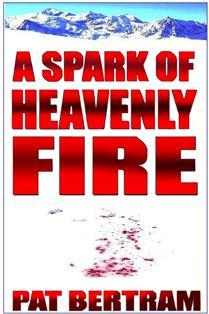
My novel of a quarantine predated this real life experience by a decade. You can read the first chapter online here: http://patbertram.com/A_Spark_of_Heavenly_Fire.html
Buy it on Amazon here: https://www.amazon.com/gp/product/B0024FB5H6/
Download the first 30% free on Smashwords: https://www.smashwords.com/books/view/1842
December 17, 2020
Out With the Old
Sometimes getting to the truth even about something as simple as a web site builder is almost impossible. Not that a website builder is simple by any means, but compared to the big questions concerning life and death, it is simple because there is an answer if you can find someone who will tell the truth.
And therein lies the problem.
About two months ago, I got an email from by website provider saying that with the demise of the Adobe Flash Player, my website will no longer be active, and they are switching me to a new website builder. The original builder, although wieldy to work with, was actually pretty simple to understand. This one, I just stared at in total non-comprehension. I’m not an IT person by any means, but over the years, I’ve learned how to do a lot of things, but this one has me flummoxed because it is so different.
So I called the company, and the person who responded said I didn’t have to do anything, that the tools would do most of the work, and that an actual person would work on the site and get it going for me.
A week later, I got another email from the company, reminding me about the upcoming change, and that I had to take action. So again, I called the company, and the person who answered iterated what the first person had said, and added that an entire division had been added to take care of the conversion.
Well, today, I got another email telling me I have to switch my account over, and that experts are standing by in case I have questions, which is entirely different from their actually doing the work. So I called again, and apparently, those first two guys were wrong. I do have to set up the website myself.
Now, instead of two months to figure out what the heck I’m doing, I have less than two weeks during Christmas season to update the site. Eek.
This guy said that the old website wouldn’t simply disappear at the end of the month, and since I don’t have anything that used the Adobe Flash player, I should be okay, but “should” isn’t much of a guarantee. He also said I have a very old web builder, that it was old when he started working there six years ago (as if six years is ancient history, which in tech terms, I suppose it is.)
The good news is that I will have many more pages at my disposal, the site will be mobile friendly, and it will follow Google’s security guidelines.
Once I get over my snit about being strung along for so many weeks, it might be fun to play around with a new site. At least I hope so.
Now I just have to figure out what pages I want, what I need to put on those pages, what I want to highlight on the front page, and how best to showcase my books.
Wish me luck. Or better yet, offer suggestions of what you like to see in a website!

***

Pat Bertram is the author of Grief: The Inside Story – A Guide to Surviving the Loss of a Loved One. “Grief: The Inside Story is perfect and that is not hyperbole! It is exactly what folk who are grieving need to read.” –Leesa Healy, RN, GDAS GDAT, Emotional/Mental Health Therapist & Educator
December 16, 2020
There Are Those
The words “There are those” from a song of that name keep playing in my head. I had to look it up to find out where those words came from because I only remembered the refrain:
There are those
There are those
I suppose
There are those
Those and suppose — a witty rhyme, right?
The song is from the musical The Happiest Millionaire — a cute song in a cute movie — but I only hear the first three words in my head, mostly because they came to mind when I think of neighbors.
Yesterday I mentioned the awful neighbor we had when Jeff and I lived on the western slope of Colorado, who plowed snow off the lane in front of our houses, and dumped it in our driveway.
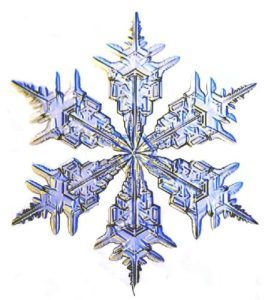
And then there are those (see? The song!) like my current neighbors. I went out yesterday to shovel my walkways, and when I’d shoveled my way down the ramp to the public walkway, I discovered that a wide path had already been cleared away.
I felt grateful and blessed, of course, to have such neighbors, but I was also amused since I had just moments before posted my blog mentioning those previous neighbors.
Apparently, there are those who dump snow in one’s driveway, and there are those who clear off one’s walkway.
Yep, like the song, there are those . . .
***

My novel of a quarantine predated this real life experience by a decade. You can read the first chapter online here: http://patbertram.com/A_Spark_of_Heavenly_Fire.html
Buy it on Amazon here: https://www.amazon.com/gp/product/B0024FB5H6/
Download the first 30% free on Smashwords: https://www.smashwords.com/books/view/1842
December 15, 2020
Snow Story
It’s snowing again, new snow piling old, and all I can do is marvel. I haven’t seen this much snow since about a month before Jeff died.
We got snow on the western slope of Colorado, of course, but nowhere near the amount people got in the mountains or in the big cities on the front range. That month, though, we got dumped on. Normally Jeff and I would have worked together to clean out the circular drive, but he was too ill to do much of anything, especially not anything so labor intensive as shoveling snow. I wouldn’t have worried about the snow, knowing it would eventually melt, but I was concerned that we wouldn’t be able to get out in case of emergency.
So I shoveled. And shoveled. And shoveled.
Making matters worse, the idiot neighbor down the road who hated us for no reason that I can fathom (except perhaps that we were strangers and city folk at that), plowed the lane in front of our house, and let the snow pile up in front of our driveway. I couldn’t even manage to get over that snow hill to ask him politely (or maybe not so politely — understandably, I was rather on edge those days) to remove the snow he had dumped there. Not that he would have done anything about the blockage anyway.
So I shoveled. And shoveled. And shoveled.
After Jeff died and I went to the high desert of California to look after my father, I experienced a snow shower now and again, but most years there wasn’t any snow at all.

One winter, after a snowfall in the nearby mountains, an acquaintance wanted to see some snow, so we drove up to Big Bear. She threw a snowball, we trudged around a bit, then went into town to get something to eat. And boy, was that town packed full of people! It seemed as if half of southern California had a yen to look at snow.
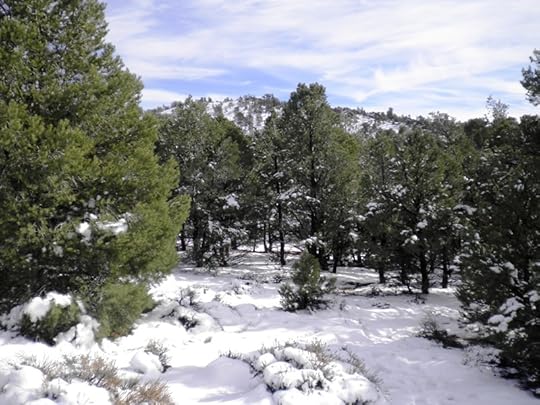
It seemed strange to me then, and still does, actually, that snow was a tourist attraction in that part of the world. I mean, anywhere I’ve lived, except for there, if you waited long enough, snow just happened. I suppose the benefit of visiting snow as a tourist is that you don’t have to shovel the stuff, but even shoveling is not that much of a hardship if one takes it slowly.
Well, it looks as if the snow has mostly stopped. So guess what I’m going to do?
Aww. You guessed it.
Yep, I’m going out to shovel snow.
***

Pat Bertram is the author of Grief: The Inside Story – A Guide to Surviving the Loss of a Loved One. “Grief: The Inside Story is perfect and that is not hyperbole! It is exactly what folk who are grieving need to read.” –Leesa Healy, RN, GDAS GDAT, Emotional/Mental Health Therapist & Educator
December 14, 2020
Preparing for Grief
An online friend who will soon be experiencing grief due the death of a loved one, asked me which of my books I would suggest she read to help her prepare.
To be honest, there is no way to prepare for such a physical, emotional, and spiritual upheaval. No matter how much we are prepared, the actuality of the experience is more than we could ever imagine because there is nothing that compare. Even people who have suffered comparable losses, such as an undesired divorce, are shocked when they have to contend with death as well as all the painful changes they were expecting.
We simply do not have the capacity for understanding death, what it means to the person dying, what their death means to us. When it happens, all we can do is stand at the abyss, and wonder if our grief will carry us over the edge.
The best way to prepare is to try to keep from falling into the pitfalls of regret and guilt, to try to act in a manner that won’t carry an additional burden into grief. I say “try” because there is no way to prevent such pitfalls. Even though a person might be dying, they are still alive, and life carries with it emotions and actions that that seem reasonable at the time and only in memory prove to be problematic. When one of a couple is struggling to live while the other is preparing to die, emotions run strong. The only time Jeff and I ever got into a verbal altercation was three weeks before he died. The problem is, although we know they are dying, we don’t know it. It seems as if forever after, they will be dying, and so we don’t truly fathom that one day they will be gone from our lives.
All we can do is love the person, do the best we can for them and for ourselves, and try to keep up our strength. A dying vigil is exhausting. Death tasks are exhausting. Grief is exhausting.
All that being said, both my books can help a person get through the lonely years that follow.
Grief: The Great Yearning is a compilation of letters, blog posts, and journal entries I wrote while struggling to survive my first year of grief. As one reviewer said, “This is an exquisite book, wrenching to read, and at the same time full of profound truths.” Many people use this book as well as my blog posts as a checkpoint to see if what they are feeling is normal, because the truth is, such grief feels anything but normal. They need to read my story partly as a validation of their own experience and to see that they are not alone in what they feel. Grief is horrendously isolating. Few of us know anyone who has experienced grief. Few of us know anyone who is willing to let us talk about how we feel without trying to “fix” us. Death is simply not fixable. It’s something that must be assimilated. And grief is how we assimilate such a profound loss.
Although the official consensus is that everyone’s grief is different, I have found the opposite to be true. We may actually grieve differently in that some people cry, some scream, some become ill, some refuse to acknowledge their feelings, but the pattern of grief after the loss of a spouse, life mate, soul mate is more or less the same for most of us. So this is not just my story, but the story of many grievers I have encountered during the years after the death of my life mate/soul mate.
Grief: The Great Yearning is a personal look at grief from the inside out. Grief: The Inside Story is look at grief from the outside in, written eight years after the onset of my grief. It’s more of a guide, an explanation of the various permutations of grief and how it changes us than simply one woman’s story. Although the book is obviously personal since my grief is the grief I am most familiar with, other people have allowed me to use their thoughts and experiences to create this guide, this explanation of grief and what the experience entails.
Coping with the death of a loved one can be the most traumatic and stressful situation most people ever deal with — and the practical and emotional help available to the bereaved is often very poor. As the bereaved struggle to make sense of their new situation they often find that the advice they receive is produced by medical professionals who have never personally experienced grief; and filled with platitudes and clichés, with very little practical help. How long does grief last? What can I do to help myself? Are there really five stages of grief? Why can’t other people understand how I feel? Will I ever be happy again? Grief: The Inside Story debunks many established beliefs about what grief is, how it affects those left behind, and how to adjust to a world that no longer contains your loved one.
Although I don’t often include it with my grief books because it is fiction, Unfinished is also an important about grief. It shows the emotional instability and practical concerns the woman character experiences while her husband is dying and shows the surreal thinking that she experienced after he was died. One reviewer found it unbelievable that a woman who so loved her husband that she experienced so much mental and physical devastation after he died, would act the way she did, carrying on with another man during that last year. But all that shows me is that she was never there. You truly do not know the skewed way one can think when forced into such an untenable situation.
Would anyone believe, considering all my talk of grief, considering our almost cosmic connection, considering all he had meant to me over the decades we were together, that there were times during that last year of our shared life when I hated him, when I just wished he’d die and get it over with? Many of us have been there, and it is a secret we hold close, seldom admitting it even to ourselves. (Thinking back, I’m sure he knew, and I’m sure he never held it against me, though I did.)
I guess, then, after reviewing all my books, a person who wants to prepare themselves for what is coming, should read Unfinished first, then Grief: The Great Yearning, and finally, Grief: The Inside Story.
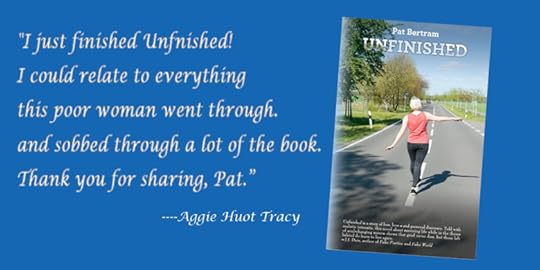
December 13, 2020
No Regrets
We were under a winter advisory watch from late yesterday afternoon until this morning because of all the snow we were supposed to get — three to six inches, they said. And boy, did we get snow — the full six inches that were forecast.

You’d think this is the sort of day that would make me regret moving back to Colorado, but rather to my surprise, it made me especially glad to be back here. I’ve never lived anywhere else where the aftermath of a winter storm (even though technically it was an autumn snowfall rather than a winter storm) is so invigorating, almost electric, with absolutely still air, blindingly blue skies, hot sun. Of course, there is the chill factor, but that was easy enough to alleviate with proper clothing, and pleasant enough for all that.
Even shoveling all that snow wasn’t a problem — it was hard work, but that work also gave me an excuse to be outside to experience the day. I suppose by the end of winter — if we get many snows like this, that is — it might be a different story, but for today, even the shoveling was a joy.
A Colorado friend who is now living in a mostly snow-free area wanted me to make a snow angel, but I had to turn her down. I can just see that — lying there with snow wings on either side of me, freezing to death because I couldn’t get up. My becoming an angel for real is not the sort of angel she wanted to see, I’m almost certain. Besides, the snow is so powdery, I doubt the image of an angel would remain even if I could still play around like that. I couldn’t even form a snowball to make a tiny snowperson.
As I was writing this, I got a call from a local friend, asking if he and his wife could stop by. I said yes, and asked when. He said, “Open your door.” So I did, and there they were, just pulling up in front of my house. What a lovely surprise, and another reason to not regret being here.
Apparently, they had made a dish to take to church for a meal afterward, as they always did, but no one else showed up. So they thought of me.
We had a good meal and a great visit.
And a good day got even better.
***

“I am Bob, the Right Hand of God. As part of the galactic renewal program, God has accepted an offer from a development company on the planet Xerxes to turn Earth into a theme park. Not even God can stop progress, but to tell the truth, He’s glad of the change. He’s never been satisfied with Earth. For one thing, there are too many humans on it. He’s decided to eliminate anyone who isn’t nice, and because He’s God, He knows who you are; you can’t talk your way out of it as you humans normally do.”
Click here to buy Bob, The Right Hand of God.
December 12, 2020
Moving On

The first time I’d heard the phrase “moving on” was a few months after Jeff died, and thereafter I heard it frequently.
Although people often think they are helping by urging grievers to get over it and move on with their life, they are merely showing that they themselves can’t handle the griever’s grief; showing that they can’t handle the new person the griever is becoming. Friends and family want grievers to be the way they were before their loss, and the griever can’t be. Loss changes you. Grief changes you.
Sometimes when people urge grievers to move on, they are not expressing insensitivity so much as a misplaced understanding of the nature of grief. (Which is why my book Grief: The Inside Story – A Guide to Surviving the Loss of a Loved One was written both for grievers and for anyone who wants to understand this thing we call “grief.”)
The truth is, grieving is how we “move on.” Grieving for a spouse is a process, a process of change from a person with a mate and shared life to someone who can deal with the absence, loss, aloneness.
“Moving on” or “moving forward” isn’t just used about grief. It’s used for almost everything, and one of these phrases frequently shows up in tarot card interpretations, such as the card I picked today that is supposed to be about overcoming fears and boldly moving forward. The phrase also appears frequently in novels and in discussions about writing, such as moving the plot forward, or the characters moving on from . . . whatever.
All of sudden today it struck me that I don’t even know what that means. “Moving forward” seems to connote a linear path, which might work for writing, given that the plot has to go from beginning to a satisfying end, but in life, there truly is no forward movement except that which we impose on our lives, such as time or age or career success or even traveling. We feel like we’re moving forward when we walk or drive somewhere, but that’s mostly an illusion. Unless we are permanently moving to a new house or new property, we eventually return to where we started, so that turns out not to be a forward motion at all.
The universe seems to be built more on circular motion, atomic particles and heavenly bodies are always in motion, orbiting around each other, making their way around empty space, but not really going anywhere because if there is not really a “here,” there can’t be a “there” to move on to. It seems as if motion is important, but not necessarily forward motion. For all I know, we could be moving backward, and it is just the way our brain interprets things to make it seem as if we are moving forward.
A kaleidoscope comes to mind. If all the energy that ever was exists today, then a turn of the scope brings us to what seems a different place, but is really all the same place. Karma and the idea that what goes around comes around also connotes a circular life. As does a gyroscope.
A tarot card I randomly picked twice in the past three days was about fluctuation and change. It suggested that a person who is in harmony with her life is one who can adapt to all the changes that comes her way, and keep on moving, Like a gyroscope that only holds its position when it is spinning,
But not “moving on”. Just “moving”.
Assuming we are supposed to be moving on, moving forward, moving toward something, where are we supposed to be going? Well, death, we are all moving inexorably toward death, since death is our end on this earth, but is that really a forward movement? After a certain age, it seems more as we are being pushed rather than moving on our own initiative. But other than that, what are we supposed to be moving toward? Enlightenment, maybe, though that brings up the issue of what is enlightenment.
In the case of grief, even though I am not actively grieving and haven’t been for a long time — I seldom even feel nostalgic anymore — I never actually “moved on,” never “got over” it. It’s more that the loss became subsumed into the very fabric of my life.
Admittedly, I might simply be sensitive to the phraseology because of all the people who used these words or variations of them to urge me to get over my grief, but they still seem to be rather meaningless terms no matter how they are used.
***

Pat Bertram is the author of Grief: The Inside Story – A Guide to Surviving the Loss of a Loved One. “Grief: The Inside Story is perfect and that is not hyperbole! It is exactly what folk who are grieving need to read.” –Leesa Healy, RN, GDAS GDAT, Emotional/Mental Health Therapist & Educator
December 11, 2020
Another Special Day
It’s exceedingly cold today, but I took this opportunity to give my car a short workout because this is the warmest it will be for a while. Eek!
It really wasn’t that bad out, but of course, I was inside my car, and even without a heating system I wasn’t too cold. Outside, there was a chill wind and a sparse bit of sleeting snow. Despite the weather, it was another example of a perfect small-town day. No matter where I went, I saw people I knew. We stopped to chat a few minutes, which was really nice, and then went on our way.
What interests me is how often I see people I know at the stores or wherever. I’ve lived in smaller places and larger places, and have gone years without ever seeing anyone I know unless I made a point of seeing them.
It wasn’t just the people I visited with that made this day special, but a field full of cranes.
I don’t like to drive just a few blocks. The engine doesn’t even heat up, and it doesn’t give the car much of a workout, so after my errands, I took a short drive down the highway, and I saw what looked like snowdrifts in a field. I didn’t think anyone around here had gotten more than a few flakes of snow, so I gave a second look, and realized the field, as far as I could see, was dotted with what I think are sandhill cranes, stopping to rest on their way to a more beneficial winter habitat.
Because I was on a narrow shoulder of the highway, I wasn’t able to get out of my car to take a photo, so I pulled over, rolled the window down, and took a picture with my phone. (I’d planned to get a birding camera when I moved here, but so far, haven’t done that. Knowing me, if I did see a bird I’d like a photo of, the camera would have been left at home, anyway.)
I sat and watched the birds for a while. Warmed by the sight, it suddenly didn’t feel so fiercely cold after all.

***

My novel of a quarantine predated this real life experience by a decade. You can read the first chapter online here: http://patbertram.com/A_Spark_of_Heavenly_Fire.html
Buy it on Amazon here: https://www.amazon.com/gp/product/B0024FB5H6/
Download the first 30% free on Smashwords: https://www.smashwords.com/books/view/1842



